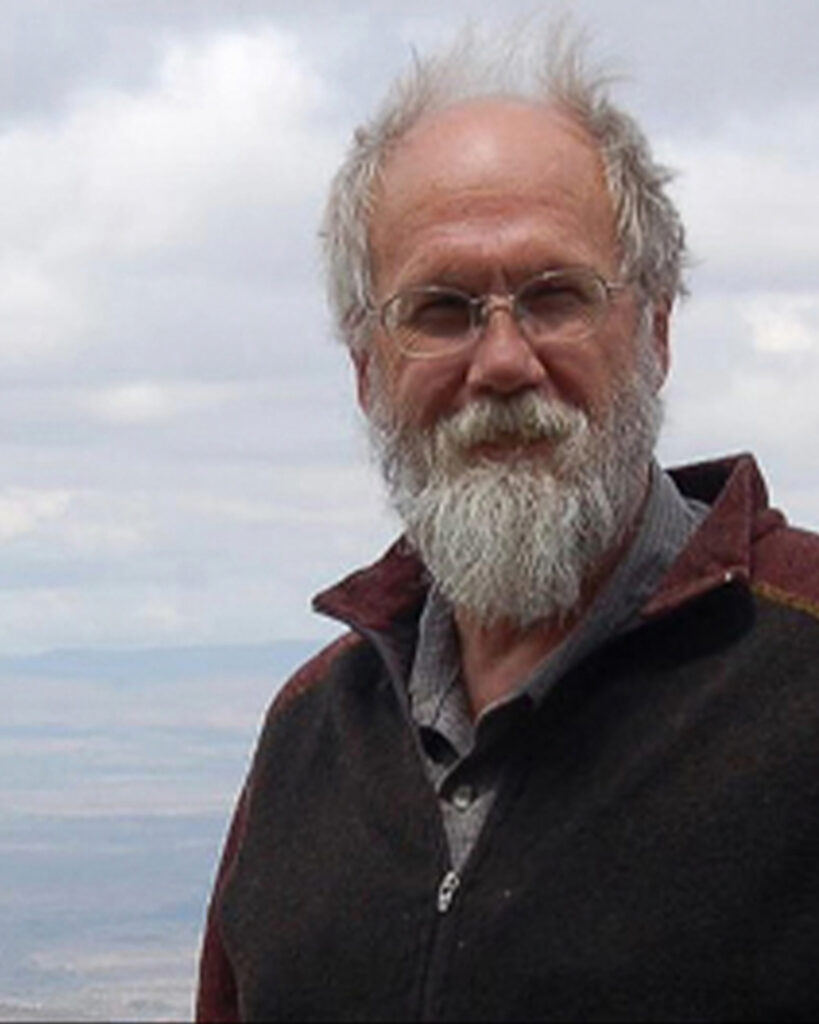Great Salt Lake is worth saving
July 2, 2024
Above: Touring Great Salt Lake. Photo credit: Jeff Bagley, University Marketing & Communications.
U scientists are helping guide Utah's Great Salt Lake Strike Team, formed three years ago at the urging of U President Taylor Randall.

Brian Steed, left, and Taylor Randall. Photo credit: Jeff Bagley, University Marketing & Communications.
Millions of eared grebes visit Great Salt Lake to rest and refuel en route to their winter homes on the Pacific Coast each fall, along with 250 other bird species throughout the year. That’s about 10 million individual birds whose survival depends on the massive saline lake and its bounty of micro-organisms and tiny flies, and shrimp.
Each visiting grebe eats between 25,000 and 30,000 brine shrimp a day, according to John Luft, who runs the Utah Division of Wildlife Resources’ Great Salt Lake Ecosystem Program.
“We’ve had as many as 5 million grebes on the lake in the fall, and they stay here September to December,” Luft told University of Utah officials last week during an airboat tour of Farmington Bay. You do the math to figure out how many shrimp these birds eat. It’s in the trillions.
That was one of the many curious facts about Utah’s vibrant, yet imperiled inland sea given to U administrators, including President Taylor Randall, on the tour. Led by Utah’s Great Salt Lake Commissioner Brian Steed, the trip was organized to update U leaders on the status of the lake and the progress of the Great Salt Lake Strike Team, a partnership between academic researchers and state officials investigating ways to reverse the lake’s alarming decline.
Earlier this year, the team presented a briefing and key recommendations to the Utah Legislature, identifying lake elevations needed to ensure the lake’s ecological health, 4,198 to 4,205 feet above sea level, and calling for changes to Utah water law to allow water conserved upstream to reach the lake via the Bear, Weber and Jordan rivers.
Universities’ role in saving the lake
“Higher education has an absolute role to play in setting the academic baseline knowledge as well as helping solve some of these wicked societal problems,” said Steed, who heads Utah State University’s Janet Quinney Lawson Institute for Land, Water & Air. “This is as much a business problem as an agriculture problem, a marketing problem as it is anything else.”
On the tour, U officials heard from Luft, Ben Stireman of the Division of Forestry, Fire and State Lands, and other key officials with the Utah Department of Natural Resources, the state agency responsible for managing the 1,500-square-mile lake. About half the lakebed is currently dry, leaving pockets of loose sediments serving as sources of potentially hazardous dust blowing into Salt Lake and Davis County cities.
Two decades of drought and a century of upstream diversions have depleted the lake, lowering its level to a point that scientists believe will severely damage the ecosystems and industries that depend on it. Currently, 6 feet below what is considered its optimal zone, damage is already occurring. Three years ago, state officials began prioritizing the lake’s recovery, with large investments in conservation and water rights acquisitions.
The strike team came together at Randall’s urging soon after he was named U president in 2022. The goal was to join experts from Utah’s two public research universities with officials from key state agencies to investigate the lake’s challenges and identify the best solutions.
“It’s been just an incredible asset to the state, because there’s nothing better than the research universities combined with the state agencies when it comes to applied science and doing things,” said Natalie Gochnour, director of the U’s Kem C. Gardner Policy Institute, which is providing staff support for strike team activities and publications.
The two schools have complemented one another for an effective partnership, she said.
“Utah State is the land-grant university; they have significant hydrological and agricultural expertise. Since approximately 70% of the water use in this state is agriculture, you have to have agricultural experts at the table,” she said. “At the U, we have expertise in climate and hydrology, as well, and we have expertise in dust.”
Meanwhile, Utah water officials have closely monitored stream flow and other hydrological data for more than a century, leaving an unparalleled historic record among Western states.
“We have such an extensive historical record on the lake,” Gochnour said. “It makes doing this science so much easier.”
U faculty active on the strike team are hydrologist Paul Brooks; forest biologist Bill Anderegg; geologist Bill Johnson; and atmospheric scientists John Lin and Courtenay Strong. Anderegg and Lin are founding directors of the U’s Wilkes Center for Climate Science & Policy. USU members include Steed, David Tarboton, Joanna Endter-Wada, Sarah Null, Bethany Nielson and Matt Yost.
Read the full story by Brian Maffly in @TheU.


 Over the course of an academic career spanning five decades, the University of Utah geoscientist has developed numerous forensic tools, such as isotope analysis, for understanding geological processes that affected the course of life on Earth, according to presentations given Saturday at a symposium to reflect on the contributions of Cerling, who is retiring this year.
Over the course of an academic career spanning five decades, the University of Utah geoscientist has developed numerous forensic tools, such as isotope analysis, for understanding geological processes that affected the course of life on Earth, according to presentations given Saturday at a symposium to reflect on the contributions of Cerling, who is retiring this year. Parker Guzman,
Parker Guzman, 
 Kisha Thambu,
Kisha Thambu,  Isaac Graham,
Isaac Graham,  Alisson Nopper
Alisson Nopper Colton Williamson,
Colton Williamson,  Kyle Pope
Kyle Pope Ella Bleak,
Ella Bleak,  America Cox,
America Cox,  Allie Perkins,
Allie Perkins,  Logan Reeves
Logan Reeves Alexander Rich
Alexander Rich